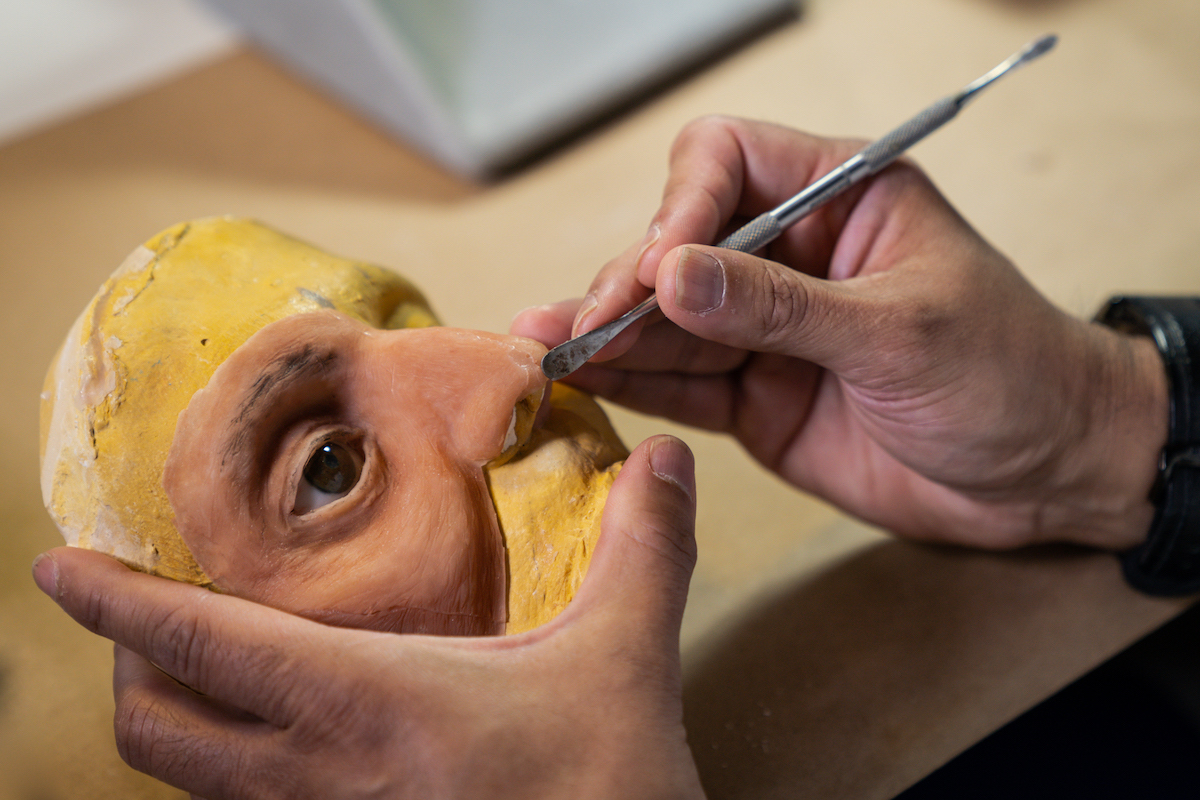Restoring a Patient’s Appearance
Courtesy of Roswell Cancer Talk Blog
For some cancer patients, surgical treatment may result in the losing an ear, nose, eye or other body parts, significantly changing their appearance, and causing severe emotional distress. Removal of structures like the hard palate (roof of the mouth), can make it difficult or impossible for a patient to speak, chew, or swallow.
Vladimir Frias, DDS, MS, Director of Maxillofacial Prosthetics at Roswell Park, creates prostheses — artificial substitutes for the missing parts — to restore a patient’s pre-surgery appearance and recover functions that they may have lost. Maxillofacial prosthetics involves replacing any part of the jaw, and craniofacial prosthetics involves replacing other parts of the head and neck, including the eyes, ears, and nose.
By the time Dr. Frias meets with patients, they’ve already spoken with their head and neck surgeon and understand what the removal will involve, but not what the replacement will involve. To ensure the prosthesis matches the patient’s pre-surgery appearance, Dr. Frias takes photos of the patient and uses a special type of silicone to make impressions of the affected area before the surgery. Often this work is done digitally. “In addition to 3D photography and laser scanning, Roswell Park’s Diagnostic Radiology Department can 3D-print patients’ anatomical models based on their CT scans.
Dr. Frias is collaborating with diagnostic radiologist Larson Hsu, MD, on a new method for creating prostheses. Prior to surgery, patients undergo a CT scan to create a 3D model of their facial structures. Dr. Hsu then prints a 3D wearable prosthesis made of material that can be in close contact with skin without causing allergic reactions. The prosthesis can be ready for use even before surgery. “Using laser scanning or 3D imaging is more precise, saves treatment time, and is much more comfortable for the patient,” says Dr. Frias.
For some patients, magnets or clips embedded in the prosthesis connect to titanium implants placed in the bone during surgery to hold it in place. In other patients the prosthesis is affixed to the implants with titanium screws. Since implants are only possible if the bone is healthy and strong and not weakened by head or neck radiation, Dr. Frias works with the radiation oncologists to protect the bones with custom-made facial radiation shields. He also installs the screws in the operating room as soon as the surgery is finished. However, sometimes surgery is delayed until the patient has healed from the cancer surgery. For jaw removal, Dr. Frias can wire or screw a surgical prosthesis into place until healing is complete.
Most prostheses have a titanium or acrylic base with a silicone surface that can be matched to the patient’s own skin color so it looks highly realistic and blends in perfectly with the natural skin. Roswell Park is home to one of very few maxillofacial rehabilitation centers in the state, where surgeons, radiation oncologists and maxillofacial prosthetics specialists work together on treatment planning. As a result, many patients come to Roswell Park from other hospitals to receive this treatment. Dr. Frias also creates prostheses for other parts of the body, such as the breasts.
Dr. Frias became interested in maxillofacial prosthetics while completing his residency in prosthodontics, which helps patients who are missing teeth or parts of the jaw. He says, “One of my professors invented some of the original techniques for the use of surgical implants for artificial noses and eyes, and I thought, that’s a great way to help people.”
For more information and articles, visit www.roswellpark.org/cancertalk. To make an appointment at Roswell Park, call 1-800-ROSWELL.












